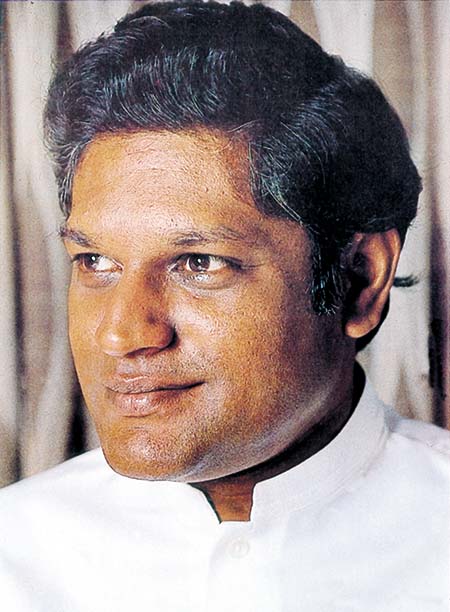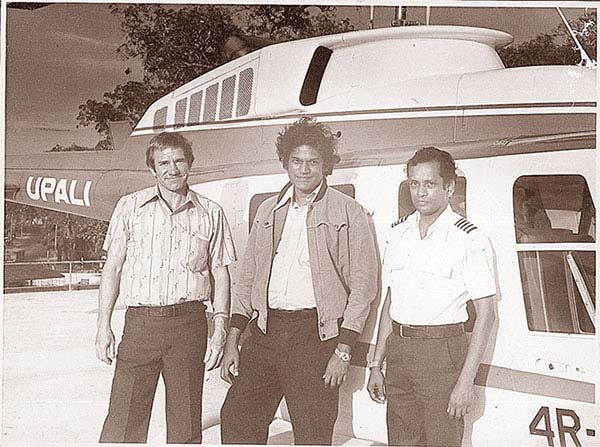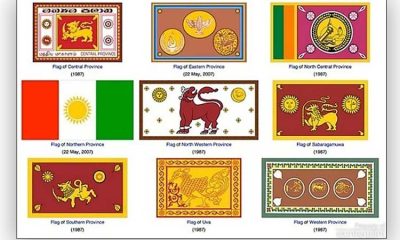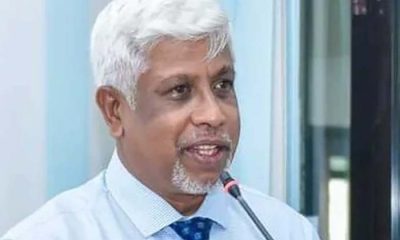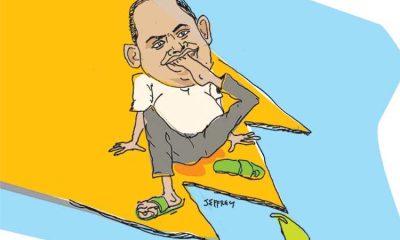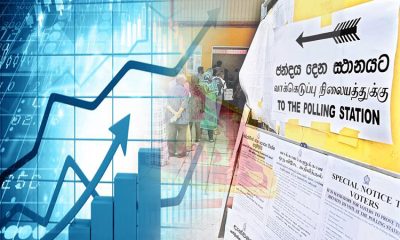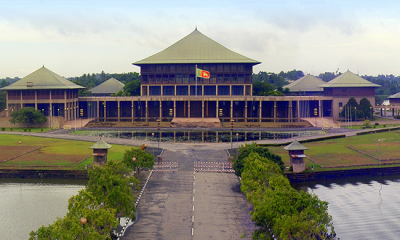Features
Upali Wijewardene – an enigma and a legend
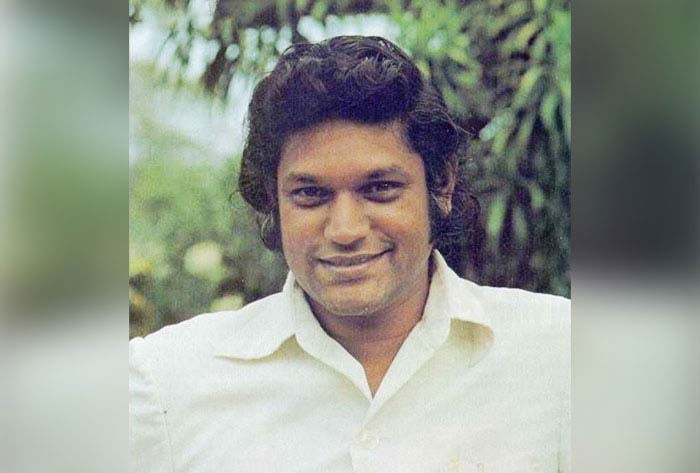
by Ajith Samaranayake
Between Sri Lanka’s 35th independence anniversary and his birthday Upali Wijewardene boarded his executive Lear Jet at Kuala Lumpur and in a single fateful flash became solidified into an enigma and a legend. The flamboyant tycoon who had left with five others never arrived in Colombo. Somewhere over the Straits of Malacca the plane disappeared with not a clue or a trace.
The drama held the nation in its grip for months. Newspapers reported little else except the mystery of the disappearance. Speculation spread like a bush fire and as the days passed with no news the most fantastic cloak and dagger theories were spun. People gathered by the roadside to listen to the radio news bulletins and strangers become friends as they speculated about the fate of a man who was one of Sri Lanka’s most beloved sons.
Destined
For Philip Upali Wijewardene it was a strangely fitting apotheosis. It was as if his whole colourful career was destined for this final peak, this sudden and dramatic exit just as he was in the very centre of the public eye, a glorious accession to the heights of myth and legend.
For Upali’s life was of the kind which dreams are made of. Though born to one of the most distinguished families in Colombo and into a charmed circle which constituted Sri Lanka’s ruling elite, Upali had carved out a career in an area totally out of synch with that class. He did not take to law or medicine or pursue an academic career as the more favoured sons of this affluent, anglicised and genteel elite were wont to do. Neither did he take to politics.
On the contrary with nothing much except the most rudimentary capital and confidence in his own abilities he began a confectionery industry and business in a part of his ancestral home where such brushes with crude commerce had never before taken place. Down the years this fledgling business he was able to build and expand into a mighty conglomerate, Sri Lanka’s only multinational, until he acquired a worldwide reputation as Sri Lanka’s leading entrepreneur, an enterprising and shrewd businessman who could hold his own with the best of them in New York, London or Bonn.
But by February 13, that fateful day which again confirmed the hold of superstition, Upali’s mind was not preoccupied with his businesses alone. For about two years politics had replaced business as his central passion. The man who had conquered the commanding heights of commerce now wanted to conquer the commanding heights of politics. And like everything else he did, he wanted to do it soon.
In 1981 he had founded The Island and the Divaina which had immediately become the eye of the political storm. Their vigorous reporting and comments which did not spare even some of the most powerful politicians of the ruling UNP came as a stirring antidote to the flabby, tame-cat Lake House press which was then dominating journalism.
Readers lapped up the new offerings avidly. Upali Wijewardene’s name was bandied about freely in Parliament. He made no secret of the fact that he wanted to enter Parliament and become finance minister which raised the hackles of the Finance Minister, the fiercely combative Mr. Ronnie de Mel. It became quite commonplace for the bespectacled and owlish Minister to hurl fearsome thunderbolts at the absent Upali in Parliament while we parliamentary reporters of The Island in the absence of our owner became surrogates for the ministerial fury and the embarrassed focus of the eyes of our colleagues in the crowded press gallery of the old Parliament by the sea.
Following year
The following year was to be one of the most crucial in Sri Lanka’s politics. President Jayewardene, Upali’s cousin and mentor, called an early Presidential Election, and in the absence of his normal rival Mrs. Sirima Bandaranaike, incapacitated by her loss of civic rights, easily beat former Minister Hector Kobbekoduwa fielded by an SLFP in tatters.
Then claiming that there was a Naxalite conspiracy to assassinate him if he had lost and claiming further that if General Elections were held on schedule a sizeable number of these horrendous Naxalites would enter Parliament he held a Referendum which the UNP won amidst widespread claims of thuggery, ballot-rigging, etc.
Anyway Upali was loyally by Jayewardene’s side during both campaigns, campaigning vigorously for the UNP at Kamburupitiya, his mother’s ancestral village, for which he had done much through his Ruhunu Udanaya programme for improving the conditions of villages in the South. The south he considered his heartland and it was from the South that he sought to enter Parliament for which there were vacancies even as he boarded his Lear Jet that day in the Malaysian capital.
Elections
For what had happened was that Jayewardene had asked for and received the resignations of 17 members of Parliament who had lost their electorates at the Referendum. Parliament had just been convened for the new session of the Second Jayewardene Presidency and the guns had boomed and the Jayamangala Gathas had been chanted. As that irrepressible Communist MP, the much lamented late Sarath Muttettuwegama quipped, “There was a 21-gun salute only the other day. And now 17 of you are gone.” Among the vacancies were Kamburupitiya and Devinuwara either of which Upali was planning to contest.
This was the backdrop to Upali’s destiny which during the next few weeks would hold the nation in its grip and virtually bring the country to a standstill. Among those on board with Upali in the plane which had left Malaysia’s Subang Airport at 8.41 p.m. on February 13 were Mr. Ananda Pelimuhandiram, the whiz kid Financial Director of the Upali Group and one of his most trusted lieutenants, a Malaysian lawyer Mr. S. M. Ratnam and Steward Mr. A. Senanayake. The jet was piloted by Capt. Noel Anandappa with Mr. Sidney de Zoysa as co-pilot.
They were to have reached Colombo by 9.45 p.m. that night but they did not come. Neither did they come the next day. By the morning of Monday February 14 Colombo was agog with the news. Soon it spread everywhere and the people paused in awe and wonderment as the enormity of the event sank into the public consciousness. Upali Wijewardene had mysteriously vanished with his three companions and two navigators leaving not a clue behind somewhere in that vast and empty night sky over Malaysia.
On Tuesday February 15 The Island, ‘Upali’s beloved flagship, broke the news soberly. Over a banner headline “Plane carrying Upali Wijewardene feared lost”. it told its readers that the jet had lost radio contact with the airport just 15 minutes after take off. The last message had said that the aircraft was at an altitude of 27,000 feet. Indonesia and Malaysia had launched a joint air and sea search operation but had failed to find any debris of an aircraft.
At The Island that Monday it was like something out of a novel by Kafka. We were in a daze. Was it possible that six people on board an aircraft in this miraculous age of technology could disappear without a trace? People huddled about the corridors talking, absorbing the news only slowly while the telephones rang incessantly as the other newspapers were getting in touch with us for the latest. But we could do little to shed light on the mystery. The most intensive search by several governments could not yield a single clue. These headlines from the papers which followed convey the flavour of those bizarre days.
February 16 —Air, sea search for Upali Wijewardene continues. Aussie plane may have seen missing jet
February 17— Three planes with sophisticated equipment comb the ocean. No results yet from seven-notion search
A flare and a weak signal but search proves negative. Search for missing plane in Andaman Island.
February 18 – Search for missing jet narrows to coastal area round Sumatra. Lear Jet reps suspect sabotage.
Wreckage
On the same day something happened which could well have been the tragic denouement of the whole drama but which was aborted at the last moment. On the afternoon of that Friday a Reuter report was received that the wreckage of the private jet and several bodies had been found off the Indonesian island of Sumatra.
I was in Fort at the time having taken a brief respite from the bleak house at Bloemendhal Road. With me at one of Fort’s many hospitable hostelries where we were drinking more than usual was Joe Segera, the Daymon Runyonesque Lake House story teller and chronicler of Canal Row and Chandra S. Perera, the always nattily-dressed NBC reporter and man about town.
Slowly the story spread through Canal Row, Hospital Street and Baillie Street and people reacted with shock and grief. More pints were drunk and our senses numbed somewhat by what we had taken Chandra who had known Upali in London and had common friends with him and I repaired to Bloemendhal Road.
There we were told by Editor Vijitha Yapa who had worked frenziedly during those days to bring out the paper in the midst of the tension that Reuter had denied the story within the hour. The next day The Island reported that it had been besieged with telephone calls following the story breaking. Reuters, Hong Kong had been contacted and The Island told ‘The story will be held back’, it reported.
And so the days passed. More headlines.
February 19 — Divers too join search near Sumatra. Another frustrating day of search
February 21 — Top Sri Lanka cops arrive in KL for investigation
Sabotage not ruled out
February 22 — Wheel found by fishermen did come from Lear Jet. Oil slick found near Kumana not from Lear Jet. February 23 —Minesweepers deployed in Indonesia today to find Jet Identification of Lear Jet wheel narrows search area. February 24 — If Lear Jet wheel was spare explosion may have occurred
February 25 —Fishermen cleared: Minesweeper move into find jet. There was no black box on missing Lear Jet. February 26 — PM answers questions on Upali
Unsolved
And so that unusually short month petered out sadly with the riddle unsolved. On the last day of February The Island headline was ‘Lalith thinks sabotage is likely cause of crash’. Under the by line of Lasantha Wickremetunge it said that the then Minister of Trade and Shipping Lalith Athulathmudali who had returned from Indonesia on February 26 as President Jayewardene’s special envoy had said that there were three possibilities for the disappearance of which the most likely was sabotage. Of the other possibilities, pilot error and a defect in the aircraft were most unlikely.
Mr. Athulathmudali also stressed that his investigations had shown that Mr. Wijewardene had no commercial enemies. In a box in the same story the paper reported ‘Temporary halt to search’ saying that since the area searched by the minesweeper had yielded no clues the search; was being abandoned and would resume if fresh evidence is uncovered. Only a single wheel — the right outbourne wheel — of the whole aircraft was found.
And so ended a drama which had electrified the country that cruel month of February and still continues to bemuse the people. What happened to Upali? is still the most popular question asked by friends and acquaintances from anybody connected with the Upali Group. Upali fascinated the people in life and now that he is no longer to be found, lost somewhere in the vast ethereal emptiness, he has become a legend and a cult which continues to enthral the people.
What would have happened if he had arrived in Colombo that February night with politics entering a fresh phase and plunged into what would have undoubtedly been a stormy political career will remain one of the most fascinating “Ifs”, of our contemporary political history.
Enigmatic fate
But what is clear is that the enigmatic fate of the man who built a commercial empire from nothing and captured a nation’s heart will always be looked upon with wonderment by them. Whether Upali could have stormed the commanding heights of politics by using the methods of advertising and self-promotion which he so successfully used in his business enterprises we will never know. Yet, like Icarus who flew but went too close to the sun so that his wings melted, the strange and fascinating destiny of Upali Wijewardene, Sri Lanka’s first tycoon who also chose the sun as his symbol, will always be a glorious legend of our times.
Newspaper
Looking back across ten more eventful years several memories crowd the mind. The memory which stands out most prominently is that of the collective effort to bring out the paper in the midst of the most terrible tension which could have pervaded any newspaper office. Editor Vijitha Yapa who was a loyal friend of Upali had to battle his feelings while he held the fort in the news room keeping in constant touch with the latest developments and answering the questions of local and foreign journalists.
For him and Deputy Editor and News Editor Gamini Weerakoon it was a trial of endurance which they magnificently stood up to. Looking at the paper to which thousands turned during that fateful month for news of its proprietor there is no sign of the almost unbearable tension with which we were working.
Upali Mahattaya
Several days on end we did not go home and the bleak reaches of the night were spent on the bare office tables with the late K. C. Kulasinghe as my companion. Or some nights would be spent in the grimy digs of D. B. S. Jeyaraj located quite close to the Premil Sports Club which was often the hub of our social life where the owner, the late Rajendra Mudalali, would approach us sombrely, always dressed in spotless white sarong and shirt and inquire ‘Any news of Upali Mahattaya?’ And in the morning the sun would rise over the splendid dome of St. Lucia’s Cathedral and we would search the vast sky for an answer.
(This article first appeared in a supplement to mark the 10th anniversary of the disappearance of Upali Wijewardene and party on Feb 13, 1993)
Features
2025 Budget: Challenges, hopes and concerns
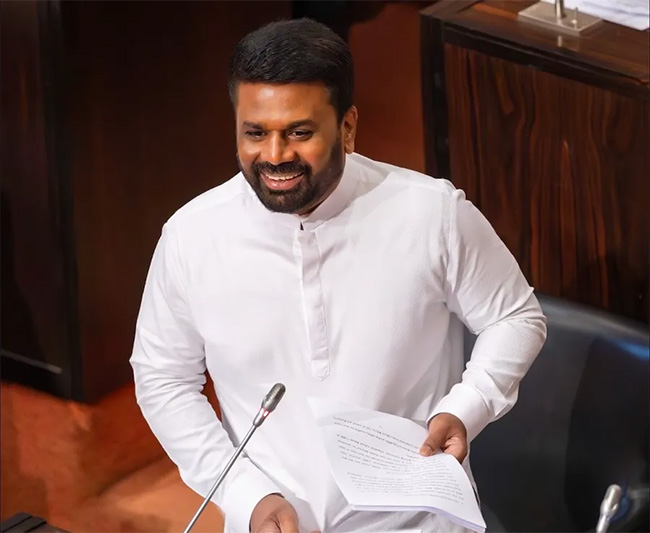
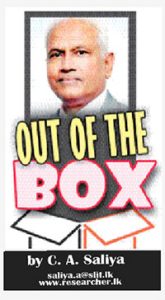 Sri Lanka’s recent government budget has sparked both hope and concern. While some see it as a positive step toward improving the country’s economy, others worry about whether the government’s proposals can be successfully implemented. This analysis explores the budget’s approach and what it could mean for the country’s financial future.
Sri Lanka’s recent government budget has sparked both hope and concern. While some see it as a positive step toward improving the country’s economy, others worry about whether the government’s proposals can be successfully implemented. This analysis explores the budget’s approach and what it could mean for the country’s financial future.
Credit Rating Improvement and What It Means
Fitch Ratings recently upgraded Sri Lanka’s credit rating, moving it from a risky “Restricted Default” (RD) to a “CCC+” rating. This shows that the country’s financial situation is improving, though it still faces a high risk of default. The government aims to increase its revenue, especially through trade taxes and income tax, but experts warn that the success of these plans is uncertain, particularly when it comes to lifting restrictions on imports.
Economic Democracy and Market Regulation
The government claims that this budget is based on the idea of “economic democracy,” aiming to balance market forces with government control. While it promises fairer distribution of wealth, critics argue that it still relies on market-driven policies that may not bring the desired changes. The budget seems to follow similar strategies to past administrations, despite the government’s claim of pursuing a new direction.
The current government, led by a Marxist-influenced party, has shifted its approach by aligning with global economic institutions like the International Monetary Fund (IMF). This represents a departure from its previous, more radical stance. The government’s vision focuses on rural development, support for small businesses, and an export-driven economy, continuing strategies from previous administrations rather than implementing drastic changes.
Stability and Continuity in Policy
One of the more positive aspects of the budget is its consistency with the fiscal policies of the past government. Sri Lanka’s economy has suffered from sudden policy changes in the past, often triggered by political transitions. By maintaining a steady course, the current government seeks to ensure stability in the recovery process, despite criticisms from political opponents.
Sri Lanka continues to face significant financial challenges, including a large budget deficit. The government’s spending in 2025 is expected to exceed its revenue by about LKR 2.2 trillion, leading to a deficit of around 6.7% of GDP. To cover this gap, the government plans to borrow both locally and internationally. However, debt repayment remains a major concern, with billions needed to settle existing obligations.
Tax Revenue and Public Spending Issues
Sri Lanka’s tax collection remains critically low, which worsens the country’s financial troubles. Tax evasion, exemptions, and inefficient administration make it hard to collect sufficient revenue. The government has raised VAT to 18% to boost income, but this could increase inflation, further harming families’ ability to afford basic goods. Additionally, corruption in public institutions continues to drain state resources, preventing effective use of funds for national development.
The Auditor General’s Department recently uncovered financial irregularities in several ministries, reinforcing concerns over systemic corruption.
Sectoral Allocations, Budget Inequities and Falures
Despite claims of prioritizing social welfare, the government’s budget allocation for key sectors remains insufficient. For example, while the government allocated LKR 500 million to improve 379 childcare centers nationwide, this amount pales in comparison to regional standards. In neighboring Bangladesh, the government spends around USD 60 per child annually, while Sri Lanka spends less than USD 25. It’s unclear whether this allocation represents an increase in funding or just a reshuffling of existing resources.
One of the biggest criticisms of the budget is its failure to address the high cost of essential goods, going against promises made during the election. Prices for basic items like rice and coconut are still high, due to supply chain issues, rising fuel costs, and tax policies. The absence of targeted subsidies or price controls has led to growing public dissatisfaction.
Public sector salary adjustments are also a point of contention. The government plans to introduce salary increases in three phases, with the full benefits expected by 2027. However, much of this increase was already granted in previous years through allowances, meaning the adjustment is more about restructuring existing funds than providing real pay increases. This slow approach raises concerns about whether employees’ purchasing power will improve, especially with inflation still a pressing issue.
The government has also urged the private sector to raise wages, but past experiences suggest that private companies often resist such requests. Without formal agreements or laws to enforce wage hikes, there is uncertainty over whether employees will see real wage growth that matches the rising cost of living.
Neglecting Vulnerable Workers and Obstinate Behaviour
Another group left out of the budget’s plans is casual and contract workers, who were expecting improvements in job security and wages, particularly those earning below LKR 1,800 per day. Despite promises made during the election, these workers have not seen any significant changes, which raises doubts about the government’s commitment to improving labor rights and income equality.
The government’s handling of private sector wage increases has also been criticized for a lack of transparency. In a televised discussion, A government representative became visibly agitated when questioned about the date of the agreement with employers, displaying obstinate behavior and refusing to answer the opposition MP’s inquiry.
Review of the Banking Sector’s Role in Govt. Revenue and Economic Growth
The banking sector helps generate national revenue through taxes such as corporate income tax, value-added tax (VAT), and financial transaction levies. However, the claim that it contributed 10% to government revenue in 2024 needs to be understood in context. Past figures have shown fluctuations in financial sector taxes, influenced by economic conditions and fiscal policies. The government’s growing reliance on the banking sector for tax revenue could signal financial stress, and this situation warrants further analysis to understand its long-term sustainability.
While the Sri Lanka Bankers Association (SLBA) emphasizes banks’ support for implementing the government’s budget proposals, their ability to do so effectively depends on broader economic conditions, regulations, and financial stability. Sri Lanka has faced persistent economic issues like high public debt and inflation, which could hamper the ability of banks to help implement fiscal policies effectively. The real impact of the banking sector in driving economic growth remains uncertain, especially given factors like currency instability and a lack of foreign investment.
Digitization and Financial Transparency
The proposal to introduce Point-of-Sale (POS) machines at VAT-registered businesses aligns with global trends in digital financial integration. This move is expected to improve transparency, reduce tax evasion, and increase banking efficiency. Research has shown that digital payments can boost financial inclusion and reduce informal economic activities. However, Sri Lanka faces challenges such as limited digital infrastructure, cybersecurity concerns, and resistance from businesses that still prefer cash transactions.
More digital services could strengthen anti-money laundering (AML) controls, improve transaction monitoring, and reduce cyber threats. However, shifting to a fully digital banking system requires substantial investments in technology, regulatory alignment, and digital literacy among consumers.
Support for SMEs and Development Banking Initiatives
The creation of a Credit Guarantee Institute for SMEs is a significant step. Research shows that credit guarantees can reduce lending risks and improve SME access to financing. However, past state-managed financial programs in Sri Lanka have been inefficient, often involving politicized lending practices.
For these new initiatives to succeed, they will need transparent governance, careful credit risk management, and strong regulations….
Conclusion
Sri Lanka’s banking sector is crucial for economic stability and revenue generation, but the increasing fiscal demands and the push for digital transformation present both significant opportunities and risks. Policymakers need to avoid over-taxation that could stifle credit expansion and investment while addressing digital finance challenges like cybersecurity and infrastructure gaps. The 2025 budget underscores the nation’s vulnerable fiscal situation, where efforts for economic stabilization are hampered by public debt, corruption, and welfare constraints. Achieving sustainability requires comprehensive tax reforms, better public expenditure management, and stronger anti-corruption measures. Without these reforms, Sri Lanka faces prolonged economic hardship, rising inequalities, and diminishing trust in governance. The budget also reflects a blend of ideological transformation and economic pragmatism, with policies largely aligning with past approaches. Fitch Ratings’ cautious optimism signals the potential for recovery, contingent on successful policy implementation. Ultimately, policy continuity is seen as Sri Lanka’s best bet for navigating fiscal uncertainty and achieving economic stability.
(The writer, a senior Chartered Accountant and professional banker, is Professor at SLIIT University, Malabe. He is also the author of the “Doing Social Research and Publishing Results”, a Springer publication (Singapore), and “Samaja Gaveshakaya (in Sinhala). The views and opinions expressed in this article are solely those of the author and do not necessarily reflect the official policy or position of the institution he works for. He can be contacted at saliya.a@slit.lk and www.researcher.com)
Features
Rethinking cities – Sustainable urban innovation

by Ifham Nizam
Dr. Nadeesha Chandrasena is an urban innovator reshaping the landscape of sustainable development. With a background that spans journalism, banking, and military engineering, she brings a unique perspective to urban planning and environmental resilience.
Her work integrates cutting-edge technology with human-centered design, ensuring that cities of the future are not only livable but also adaptive to climate change and rapid urbanisation.
In this interview with The Island, Dr. Chandrasena shares insights into her journey—from her early days in journalism to pioneering the Smart Drain Initiative, a groundbreaking infrastructure project addressing urban drainage inefficiencies. She discusses the critical role of community engagement, the challenges of balancing innovation with political realities, and the urgent need for sustainable urban solutions in Sri Lanka and beyond.
Her story is one of relentless curiosity, problem-solving, and a deep commitment to building better cities. As she puts it, “Urbanisation is inevitable; our challenge is to shape it in ways that are inclusive, sustainable, and forward-thinking.”
Urbanisation is one of the defining challenges of the 21st century, and few understand its complexities better than Dr. Chandrasena. A trailblazer in sustainable urban development, she has dedicated her career to bridging the gap between technological innovation and environmental sustainability. Through her work, she emphasises a crucial message: cities must evolve—not just grow.
From Journalism to Urban Innovation
Dr. Chandrasena’s career path is anything but conventional. Beginning as a journalist, she honed her skills in field research and community engagement, which later became instrumental in her work as an urban planner. “Journalism taught me how to listen to people’s stories and understand the realities on the ground,” she explains. This background helped her develop urban solutions rooted in real-world insights rather than abstract theories.
Her transition into urban innovation was fueled by a deep-seated passion for environmental resilience. After a stint in banking and serving in the Sri Lanka Army Corps of Engineers, she pursued town and country planning, ultimately integrating her diverse experiences to address urban challenges holistically.
The Smart Drain Initiative: A Game Changer in Urban Infrastructure
One of Dr. Chandrasena’s most groundbreaking contributions is the Smart Drain Initiative—a next-generation urban drainage system designed to combat flooding and waste accumulation. Implemented in areas like Balapola and Ambalangoda, this technology incorporates IoT-based monitoring, predictive maintenance, and automated waste filtration to enhance resilience against climate change.
“Storm drains are often neglected, but they are the foundation of a city’s flood resilience,” she says. By modernising drainage infrastructure, her initiative is setting a precedent for cities worldwide to rethink their approach to urban water management.
Livability as the Core Urban Challenge
For Dr. Chandrasena, urban planning is not just about infrastructure—it’s about people. She identifies livability as the root problem that must be addressed in city planning. “Congestion, pollution, lack of green spaces, and inefficient waste management are all symptoms of poor urban planning,” she explains. Her work focuses on designing cities that prioritise well-being, accessibility, and sustainability.
Sri Lanka, in particular, faces unique challenges due to rapid urbanisation. With cities like Colombo struggling to accommodate a massive influx of commuters, Dr. Chandrasena advocates for affordable housing solutions near economic hubs and improvements in public transportation. “A city’s economic success should not come at the cost of its residents’ quality of life,” she insists.
Technology and Community Engagement: The Future of Urban Development
Dr. Chandrasena sees technology as a powerful tool for fostering inclusive urban development. From using social media for community consultations to deploying smart infrastructure, she believes digital solutions can democratise urban planning. “We need to move beyond traditional engagement methods and empower people through accessible technology,” she says.
Her leadership philosophy reflects this inclusive approach. Through initiatives like the MyTurn Internship Platform, she mentors young professionals, encouraging them to take an active role in shaping the future of cities. “Leadership is not about authority—it’s about creating opportunities for collaboration,” she adds.
Global Urban Challenges and the Need for Collaboration
Urban issues are not confined to national borders. Dr. Chandrasena highlights the importance of global partnerships, citing the twin-city concept as a model for knowledge exchange. By pairing cities with similar challenges—such as Galle, Sri Lanka, and Penang, Malaysia—municipalities can co-create solutions that address both local and global urban challenges.
Her work has not gone unnoticed. She recently won Australia’s Good Design Award for Best in Class Engineering Design, a testament to the impact of her innovative approaches.
Call to Action for Sustainable Cities
Dr. Chandrasena’s vision for the future is clear: cities must be designed to be resilient, inclusive, and sustainable. While challenges like climate change and urban congestion persist, she remains optimistic. “There are no perfect cities—just as there are no perfect people. But by striving for practical solutions, we can make cities better for everyone.”
Her journey—from journalist to urban innovator—demonstrates that change begins with a vision and the determination to act on it. As urbanisation accelerates, her work serves as a blueprint for how cities can not only survive but thrive in an ever-evolving world.
Features
Need to appreciate SL’s moderate politics despite govt.’s massive mandate
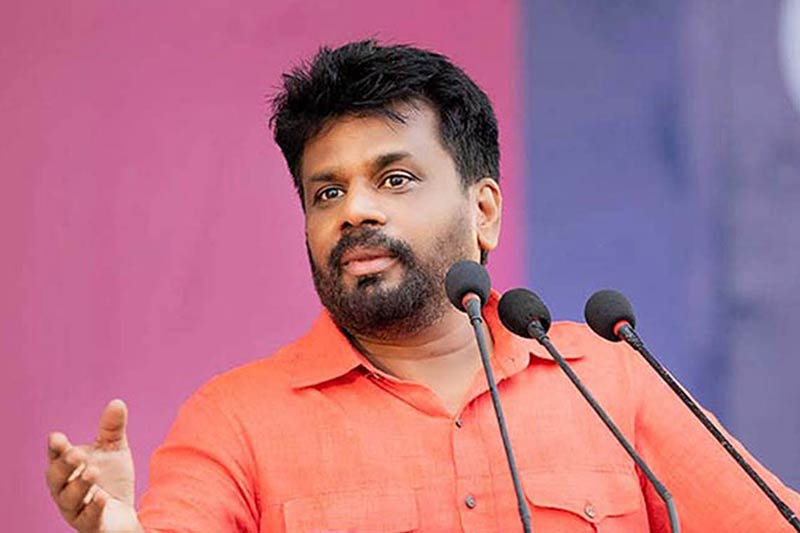
by Jehan Perera
President Donald Trump in the United States is showing how, in a democratic polity, the winner of the people’s mandate can become an unstoppable extreme force. Critics of the NPP government frequently jibe at the government’s economic policy as being a mere continuation of the essential features of the economic policy of former president, Ranil Wickremesinghe. The criticism is that despite the resounding electoral mandates it received, the government is following the IMF prescriptions negotiated by the former president instead of making radical departures from it as promised prior to the elections. The critics themselves do not have alternatives to offer except to assert that during the election campaign the NPP speakers pledged to renegotiate the IMF agreement which they have done only on a very limited basis since coming to power.
There is also another area in which the NPP government is following the example of former President Ranil Wickremesinghe. During his terms of office, both as prime minister and president, Ranil Wickremesinghe ruled with a light touch. He did not utilise the might of the state to intimidate the larger population. During the post-Aragalaya period he did not permit street protests and arrested and detained those who engaged in such protests. At the same time with a minimal use of state power he brought stability to an unstable society. The same rule-with-a-light touch approach holds true of the NPP government that has succeeded the Wickremesinghe government. The difference is that President Anura Kumara Dissanayake has an electoral mandate that President Wickremesinghe did not have in his final stint in power and could use his power to the full like President Trump, but has chosen not to.
At two successive national elections, the NPP obtained the people’s mandate, and at the second one in particular, the parliamentary elections, they won an overwhelming 2/3 majority of seats. With this mandate they could have followed the “shock and awe” tactics that are being seen in the U.S. today under President Donald Trump whose party has won majorities in both the Senate and House of Representatives. The U.S. president has become an unstoppable force and is using his powers to make dramatic changes both within the country and in terms of foreign relations, possibly irreversibly. He wants to make the U.S. as strong, safe and prosperous as possible and with the help of the world’s richest man, Elon Musk, the duo has become seemingly unstoppable in forging ahead at all costs.
EXTREME POWER
The U.S. has rightly been admired in many parts of the world, and especially in democratic countries, for being a model of democratic governance. The concepts of “checks and balances” and “separation of powers” by which one branch of the government restricts the power of the other branches appeared to have reached their highest point in the U.S. But this system does not seem to be working, at least at the present time, due to the popularity of President Trump and his belief in the rightness of his ideas and Elon Musk. The extreme power that can accrue to political leaders who obtain the people’s mandate can best be seen at the present time in the United States. The Trump administration is using the president’s democratic mandate in full measure, though for how long is the question. They have strong popular support within the country, but the problem is they are generating very strong opposition as well, which is dividing the U.S. rather than unifying it.
The challenge for those in the U.S. who think differently, and there are many of them at every level of society, is to find ways to address President Trump’s conviction that he has the right answers to the problems faced by the U.S. which also appears to have convinced the majority of American voters to believe in him. The decisions that President Trump and his team have been making to make the U.S. strong, safe and prosperous include eliminating entire government departments and dismissing employees at the Consumer Financial Protection Bureau (CFPB), Centers for Disease Control and Prevention (CDC) and the Food and Drug Administration (FDA) which were established to protect the more disadvantaged sectors of society. The targets have included USAID which has had consequences for Sri Lanka and many other disadvantaged parts of the world.
Data obtained from the Department of External Resources (ERD) reveal that since 2019, USAID has financed Sri Lankan government projects amounting to Rs. 31 billion. This was done under different presidents and political parties. Projects costing USD 20.4 million were signed during the last year (2019) of the Maithripala Sirisena government. USD 41.9 million was signed during the Gotabaya Rajapaksa government, USD 26 million during the Ranil Wickremesinghe government, and USD 18.1 million so far during the Anura Kumara Dissanayake government. At the time of the funding freeze, there were projects with the Justice Ministry, Finance Ministry, Environment Ministry and the Energy Ministry. This is apart from the support that was being provided to the private sector for business development and to NGOs for social development and good governance work including systems of checks and balances and separation of powers.
MODERATE POLITICS
The challenge for those in Sri Lanka who were beneficiaries of USAID is to find alternative sources of financing for the necessary work they were doing with the USAID funding. Among these was funding in support of improving the legal system, making digital technology available to the court system to improve case management, provision of IT equipment, and training of judges, court staff and members of the Bar Association of Sri Lanka. It also included creating awareness about the importance of government departments delivering their services in an inclusive manner to all citizens requiring their services, and providing opportunities for inter-ethnic business collaboration to strengthen the economy. The government’s NGO Secretariat which has been asked to submit a report on USAID funding needs to find alternative sources of funding for these and give support to those who have lost their USAID funding.
Despite obtaining a mandate that is more impressive at the parliamentary elections than that obtained by President Trump, the government of President Anura Kumara Dissanayake has been more moderate in its efforts to deal with Sri Lanka’s problems, whether in regard to the economy or foreign relations. The NPP government is trying to meet the interests of all sections of society, be they the business community, the impoverished masses, the civil society or the majority and minority ethnic and religious communities. They are trying to balance the needs of the people with the scarce economic resources at their disposal. The NPP government has demanded sacrifice of its own members, in terms of the benefits they receive from their positions, to correspond to the economic hardships that the majority of people face at this time.
The contrast between the governance styles of President Trump in the U.S. and President Dissanayake in Sri Lanka highlights the different paths democratic leaders can take. President Trump is attempting to decisively reshape the U.S. foreign policy, eliminating entire government departments and overwhelming traditional governance structures. The NPP government under President Dissanayake has sought a more balanced, inclusive path by taking steps to address economic challenges and governance issues while maintaining stability. They are being tough where they need to be, such as on the corruption and criminality of the past. They need to be supported as they are showing Sri Lankans and the international community how a government can use its mandate without polarising society and thereby securing the consensus necessary for sustainable change.
-

 Business3 days ago
Business3 days agoSri Lanka’s 1st Culinary Studio opened by The Hungryislander
-
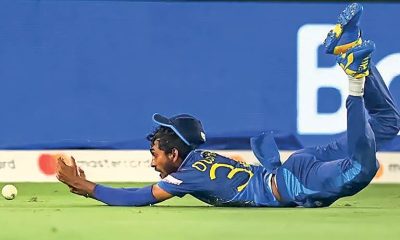
 Sports4 days ago
Sports4 days agoHow Sri Lanka fumbled their Champions Trophy spot
-
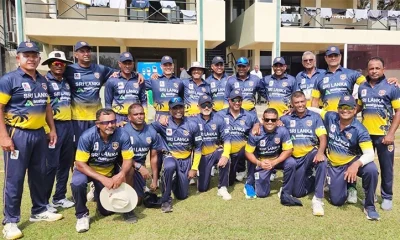
 Sports7 days ago
Sports7 days agoSri Lanka face Australia in Masters World Cup semi-final today
-

 News7 days ago
News7 days agoCourtroom shooting: Police admit serious security lapses
-
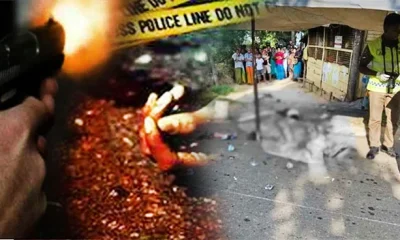
 News7 days ago
News7 days agoUnderworld figure ‘Middeniye Kajja’ and daughter shot dead in contract killing
-
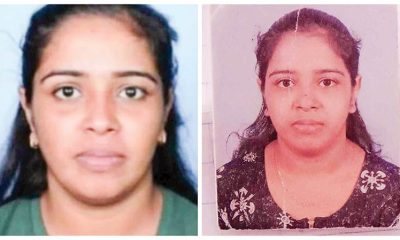
 News6 days ago
News6 days agoKiller made three overseas calls while fleeing
-
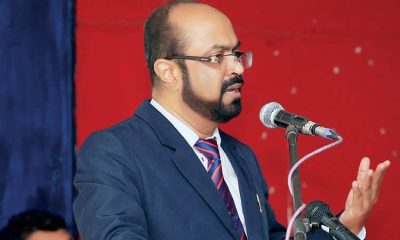
 News5 days ago
News5 days agoSC notices Power Minister and several others over FR petition alleging govt. set to incur loss exceeding Rs 3bn due to irregular tender
-
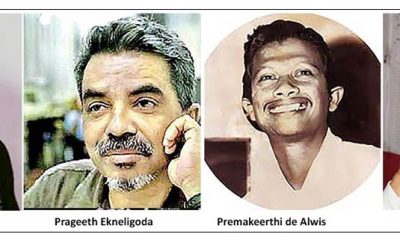
 Features4 days ago
Features4 days agoThe Murder of a Journalist

